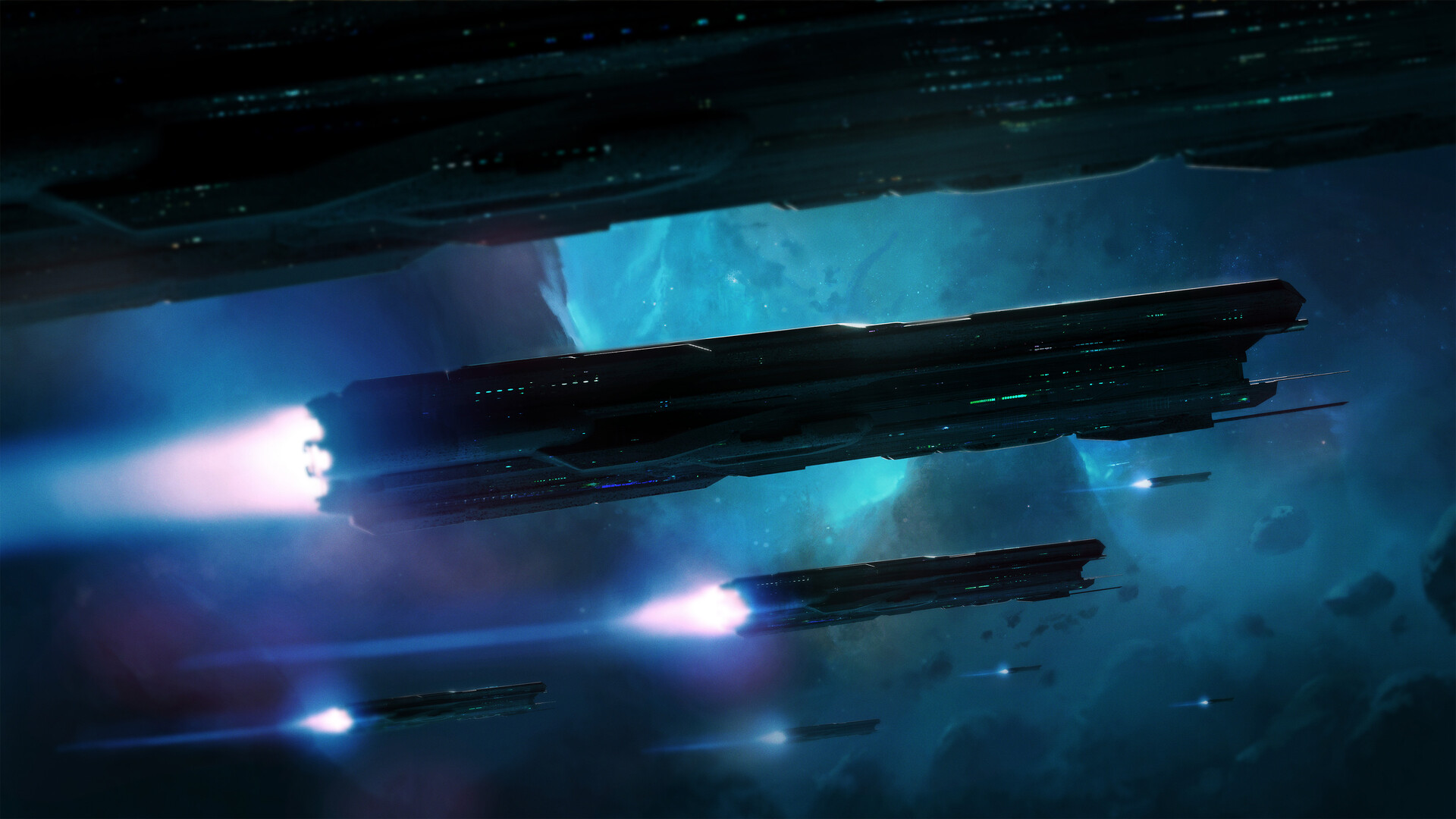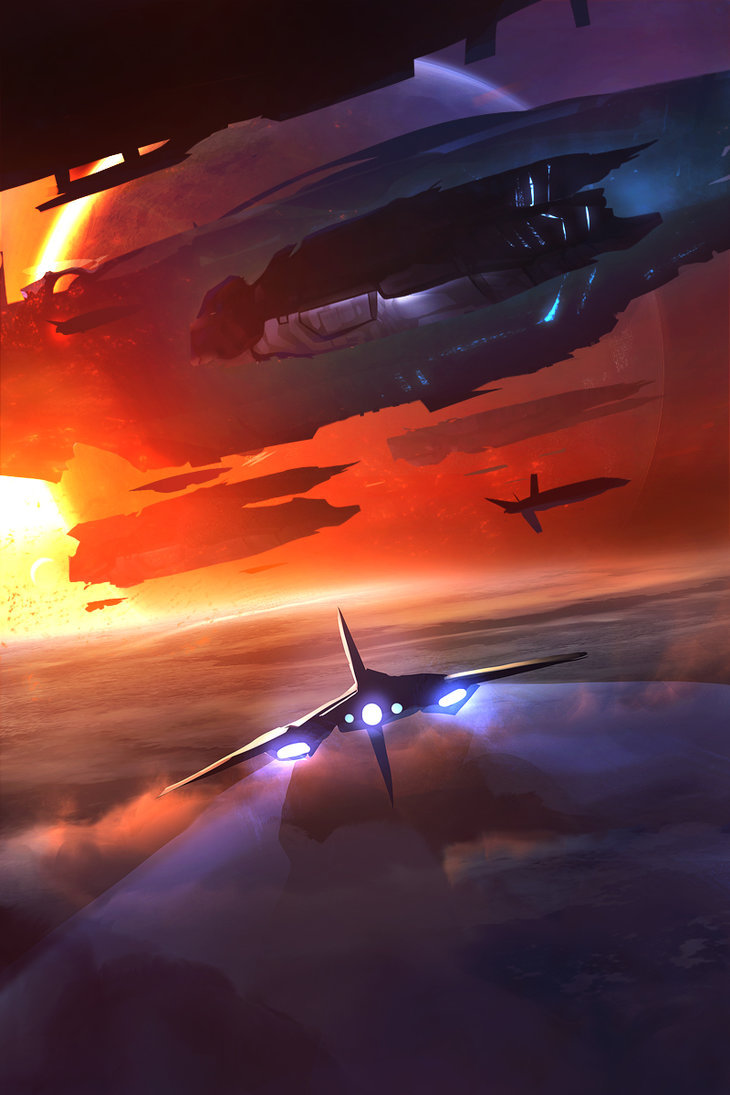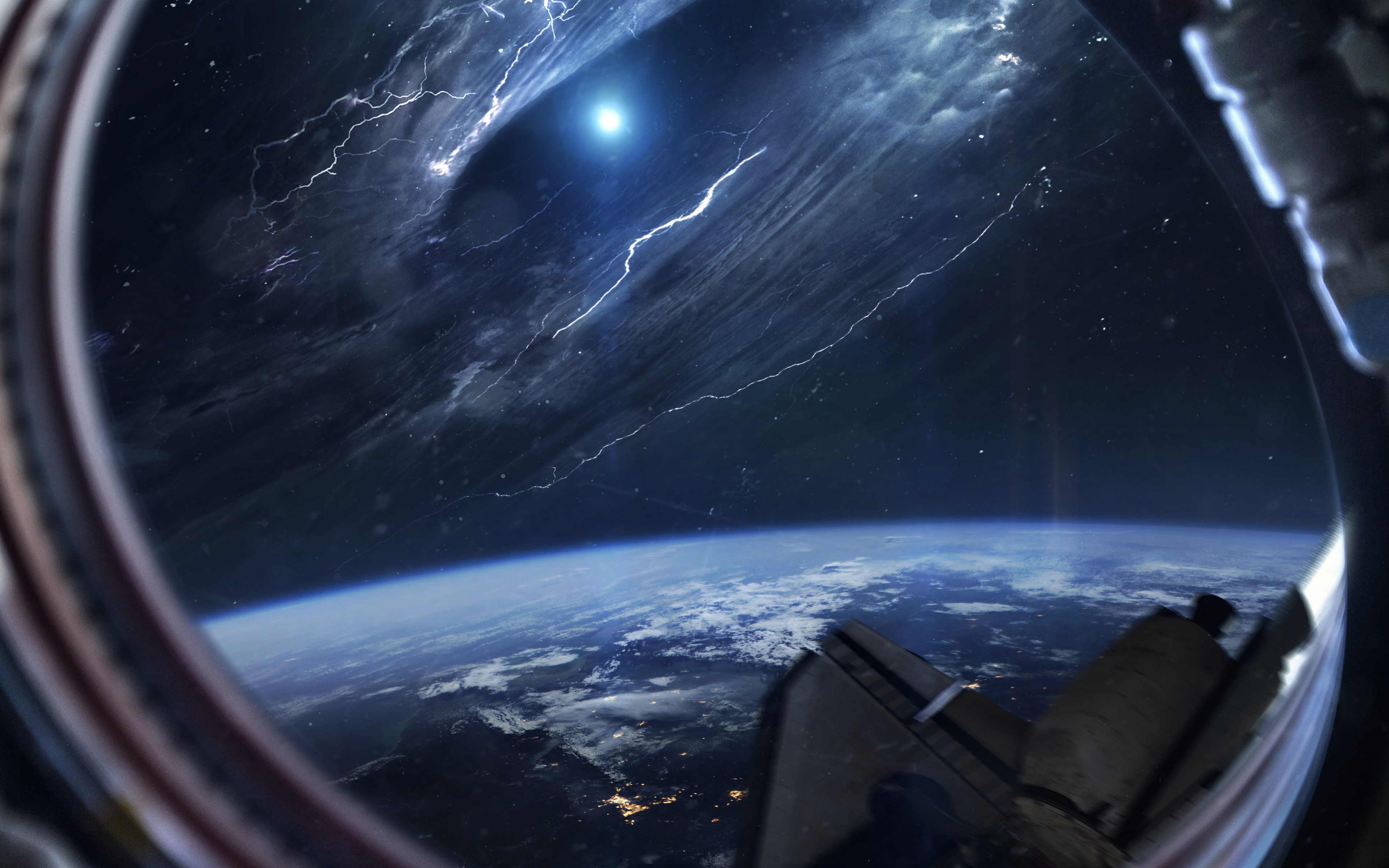Faster Than Light Travel
Under no circumstances should a DMI jump be initiated without having calculated the exact target destination. Otherwise, the result will prove fatal.Few people ever realize how vast space truly is. That even light can take a hundred lifetimes to cross even the distance between two systems. Thankfully the minds of Andromeda's many children have devised a way to bridge the void. Even if it involves breaking reality itself.
Natural Imbalance
Within the existing Universe there is an imbalance regarding the very substance that holds everything together. Dark Matter makes up the majority of the universe, keeps stellar structures like Galaxies and Galactic Clusters together and pushes them around the void at unimaginable speeds. More than 75% of the universe consist of this strange matter, the rest being various forms of energy and of course the Visible Matter that makes up familiar forms such as Planets and Stars. Where the Visible Matter concentration is particularly high, such as in Star Systems, the Dark Matter concentration will be low, creating a natural imbalance.Bridging the Void
This is where the DMI-Drive, also known as Ripper-Drive, comes in. Its core, made from eroded Tarium, will overload for a period of ten seconds, causing an energy spike a thousand times the level the ship normally operates under. Said energy spike is then directed onto the ship's shields. Unique to the Tarium Reactor, the energy signature now transferred over to the shields, allows the ship to directly interact with the Dark Matter around it. However, its energy level will still pale in comparison to that of Dark Matter initiating an immediate mass-transfer of power to the ship which results in the vehicle accelerating beyond the speed of light.Speed
Thanks to advancements in technology, the standard Type-1 DMI-Drive clocks in at around 2.100 times the speed of light. The incredible force unleashed by any object being accelerated to that point seems to literally rip space apart, creating a rift of green light and giving the drive its casual name. Military grade Type-7 engines are even able to reach speeds of up 6.700 times the speed of light, allowing them to reach most systems in a matter of a few hours.
Thanks to advancements in technology, the standard Type-1 DMI-Drive clocks in at around 2.100 times the speed of light. The incredible force unleashed by any object being accelerated to that point seems to literally rip space apart, creating a rift of green light and giving the drive its casual name. Military grade Type-7 engines are even able to reach speeds of up 6.700 times the speed of light, allowing them to reach most systems in a matter of a few hours.
Accuracy
Accuracy becomes important as entrance into a Star System, where the concentration of Dark Matter is noticeably lower than anywhere else, is the only way for a ship to decelerate from FTL speed. If the vessel does not hit a system, it will simply continue on into the void. Since space is unimaginably vast, pin-point accuracy is required when making a jump from one system to another. Thankfully, modern navigational systems can easily make the calculations necessary to ensure a safe jump.
Accuracy becomes important as entrance into a Star System, where the concentration of Dark Matter is noticeably lower than anywhere else, is the only way for a ship to decelerate from FTL speed. If the vessel does not hit a system, it will simply continue on into the void. Since space is unimaginably vast, pin-point accuracy is required when making a jump from one system to another. Thankfully, modern navigational systems can easily make the calculations necessary to ensure a safe jump.
It is the greatest punishment my kind can deal out: to put you in a ship without a nav-computer and just shoot you into the void. Doomed to be eternally lost without any chance of escape.
Exploration
To explore the cosmos, Andromeda's many civilizations have taken to use Satellites and Probe Droids. Main reason being that it is both cheap and safe.
Satellites scan for new systems and calculate possible routes. Droids are then sent along those routes. Those that work are added to the nav-computers.
Why do things stay together?
A question one may reasonably ask is why both ship and crew stay intact while accelerating far beyond the speed of light. The simple answer is: Dark Matter.
In the same manner in that it keeps Star Systems, Galaxies, and even entire Clusters together, it also ensures that both ship and crew keep their form. Scientists have theorized that it has a desire to keep all things in a "natural state" of sorts.
Disrupting this state would require an amount of energy equivalent or higher than that of the Dark Matter itself. Something that could only be achieved by recreating the Big Bang.
Remove these ads. Join the Worldbuilders Guild
Remove these ads. Join the Worldbuilders Guild





Comments